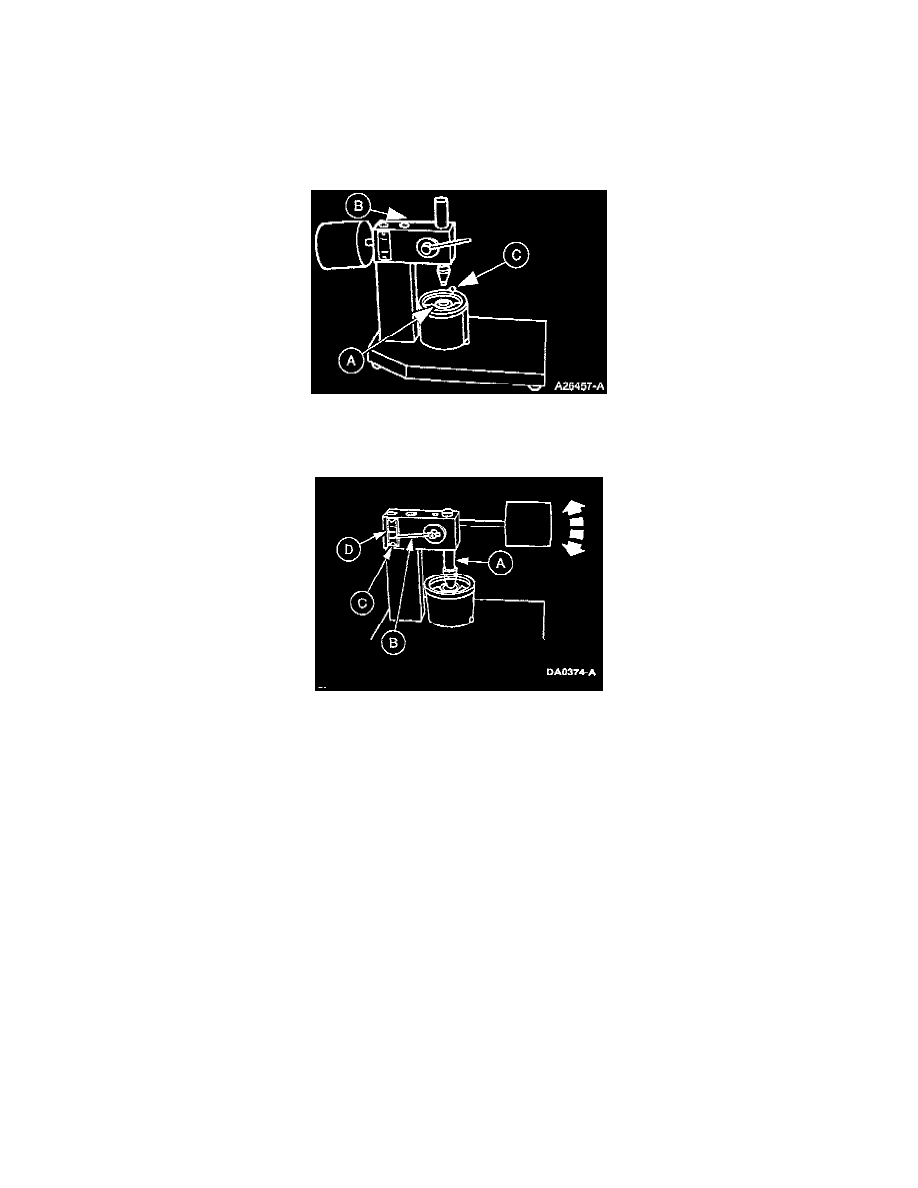E 150 1/2 Ton Van V6-4.2L VIN 2 (1997)

Lifter / Lash Adjuster: Component Tests and General Diagnostics
Leakdown Test
1. Compress the hydraulic valve tappet to remove the engine oil if necessary.
NOTE: The leak-down test will not be accurate if it is done with engine oil in the hydraulic valve tappet. Use testing fluid. New hydraulic valve
tappets are already filled with testing fluid.
2. Place the (A) hydraulic valve tappet in a (B)commercially available hydraulic tappet leak-down tester. Position the (C) steel ball provided in the
plunger cap. Add testing fluid to cover the hydraulic tappet and compress Hydraulic Tappet leak-down Tester until the hydraulic valve tappet is
filled with testing fluid.
3. Adjust the length of the (A) ram so that the (B)pointer is just below the (C) Start Timing mark when the ram contacts the hydraulic valve tappet.
Start timing as the pointer passes the (C) Start Timing mark and end timing as the pointer reaches the (D) center mark.
Noise
Hydraulic valve tappet noise can be caused by any of the following:
^
Excessive collapsed valve tappet gap
^
Sticking valve tappet plunger
^
Valve tappet check valve not functioning properly
^
Air in lubrication system
^
Leakdown rate too rapid
^
Excessive valve guide wear
Excessive collapsed valve tappet gap can be caused by loose rocker arm seat bolts/nuts, incorrect initial adjustment or wear of valve tappet face, or worn
roller valve tappets, push rod, rocker arm, rocker arm seat or valve tip. With valve tappet collapsed, check gap between the valve tip and the rocker arm
to determine if any other valve train parts are damaged, worn or out of adjustment.
A sticking valve tappet plunger can be caused by dirt, chips or varnish inside the valve tappet.
A valve tappet check valve that is not functioning can be caused by an obstruction such as dirt or chips that prevent it from closing when the camshaft
lobe is lifting the valve tappet. It may also be caused by a broken check valve spring.
Air bubbles in the lubrication system will prevent the valve tappet from supporting the valve spring load. This can be caused by too high or too low an
oil level in the oil pan or by air being drawn into the system through a hole, crack or leaking gasket on the oil pump screen cover and tube.
If the leak-down time is below the specified time for used valve tappets, noisy operation can result. If no other cause for noisy valve tappets can be
